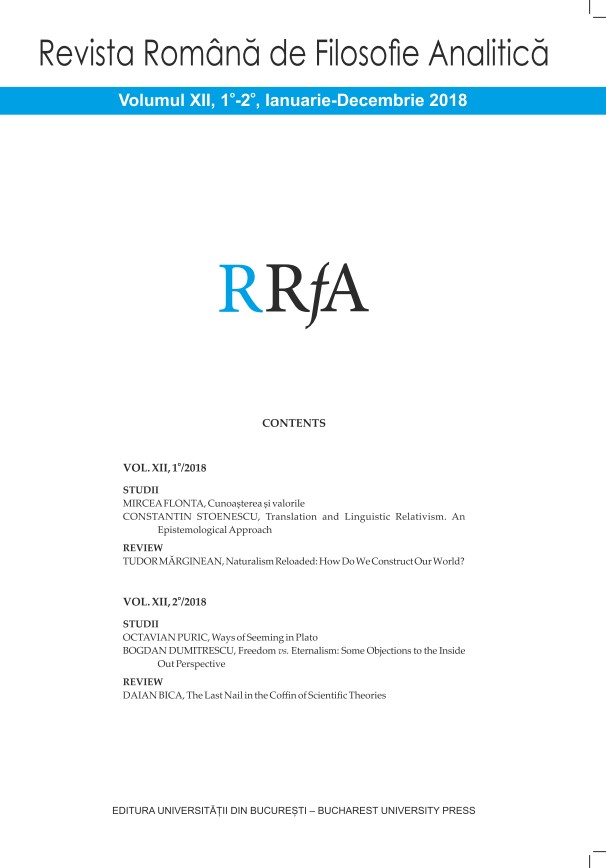WAYS OF SEEMING IN PLATO
WAYS OF SEEMING IN PLATO
Author(s): Octavian PuricSubject(s): Philosophy, History of Philosophy, Ancient Philosphy
Published by: Editura Universităţii din Bucureşti
Keywords: model; image; ontological seeming; genealogical seeming; perspectival seeming; heuristic seeming;
Summary/Abstract: The purpose of this article is to present what I take to be the two main senses of seeming that we can find at play throughout Plato’s work. These are what I have called the ontological sense and the genealogical sense. I begin by introducing Plato’s model-image metaphor. The model image relation will provide me with the elements necessary to illustrate the two main ways of seeming. I distinguish two senses in which we can read the image metaphor based on two types of objects the metaphor can refer to. When I want to refer to the particulars and their images, I will use the term “literal relata”. When I refer to the Forms and the particulars I will use “metaphorical relata”. I will call the models from the literal relata — the particulars — by the name of “relative models”, while reserving the unqualified term of “model” to the models of the metaphorical relation, i.e., the Forms. Afterwards, I argue that there are two main types of seeming throughout Plato’s work, the ontological seeming and the genealogical seeming. On the one hand, I define ontological seeming as investing, either tacitly or explicitly, that which is ontologically an image with the role and function proper to the real model. Genealogical seeming, on the other hand, presupposes a difference between model and image, and consists in incorrectly identifying an image as being of a model rather than another. I will maintain that identifying an image as being of a model is the basis on which Plato understands predication. I will further divide both types of seeming. I will call both ontological and genealogical seeming “perspectival” whenever their objects are particulars and when error is due to perspectival causes. With regards to ontological seeming, I will call it “radical” whenever it invests a relative model with the function of the true model. I shall call genealogical seeming “heuristic” whenever improper images of models are used to instill in someone an improper model. Radical genealogical seeming, on the other hand, will consist in the application of unsound models in identifying particulars. Finally, I will argue that the radical ontological seeming and the genealogic heuristic seeming can be dispelled only by the use of dialectics, and thus constitute the target of Plato’s actual philosophical concern.
Journal: Revista Română de Filosofie Analitică
- Issue Year: XII/2018
- Issue No: 2
- Page Range: 65-101
- Page Count: 37
- Language: English

